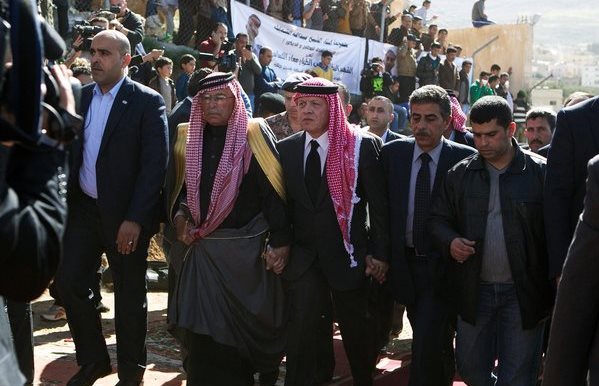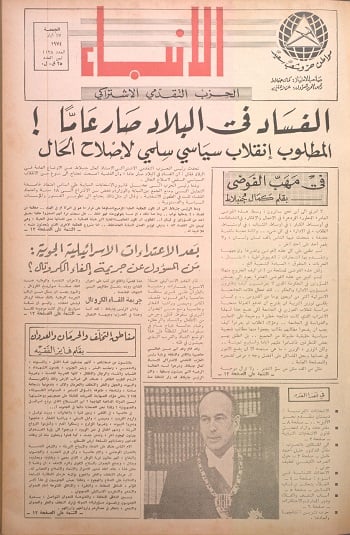The Spreading Rage at ISIS
New York Times
6 فبراير 2015

Terrorism has long had a gruesome role in conflicts, often among revolutionary groups so fanatically certain of their ends that they readily justify the most barbaric of means. But it can also turn with a vengeance against those who inflict it, as the Islamic State is learning with its most recently publicized atrocity — murdering a Jordanian air force pilot by burning him alive. The video of the killing was meant to dissuade Arabs from participating in the Western coalition against the group; instead, it has succeeded in fostering rage and revulsion against the jihadists throughout the Arab world.
The Islamic State, the group also known as ISIS or ISIL, or “Daesh” among Arabs, has achieved a low in the annals of terrorism through its use of the Internet to post videos and images of executions, most by beheading, of bound, kneeling hostages — including, lately, two Japanese men. Although ISIS has inflicted death and inhumane torture on Arabs in its areas of operation in Syria and Iraq, feelings toward the group within various parts of the Arab world had been mixed, with many Arabs professing either indifference or varying degrees of sympathy for the jihadists. Jordan, a strong ally of the United States in the fight against ISIS, was also the largest source of recruits for the group.
That changed after ISIS posted a video on Tuesday of the captured Jordanian pilot, First Lt. Moaz al-Kasasbeh, being burned alive in a cage. The killing had apparently taken place in early January, though ISIS cynically continued proposing to swap him for prisoners in Jordan until negotiations broke down after Jordan demanded proof that the pilot was alive. The Middle East erupted in fury at the video of the execution. The Islamic prohibition against immolation may have been a factor in the outpouring of anger among Arabs.
King Abdullah II of Jordan promptly ordered the execution of two jihadists already sentenced to death in Jordan, and was welcomed by cheering crowds on his return from a visit to Washington. On Thursday, Jordanian planes responded by bombing Islamic State targets. Leaders in other nations condemned the murder of the pilot, and a grand imam in Cairo called for ISIS leaders themselves to face medieval-style executions.
While Lieutenant Kasasbeh was still alive, or thought to be alive, many Jordanians, including his father, questioned their country’s participation in the campaign against ISIS. Now, ISIS faces potent censure and opposition from people across the region, and even among many who tolerated or ignored its past atrocities.
If the outrage on display in the Middle East translates into a broader fight against barbaric jihadism, and a deeper commitment to eradicating it, Lieutenant Kasasbeh’s cruel death may prove not to have been in vain.
 عن أمل جنبلاط المتجدد: لبنان يستحق النضال
عن أمل جنبلاط المتجدد: لبنان يستحق النضال
 صحافيون أم عرّافون!
صحافيون أم عرّافون!
 ماذا يجري داخل أروقة بيت الكتائب المركزي؟
ماذا يجري داخل أروقة بيت الكتائب المركزي؟


 عن الخرائط التي تُرسم والإتفاقات التي تتساقط!
عن الخرائط التي تُرسم والإتفاقات التي تتساقط!
 “الإنحراف في الحياة”/ بقلم كمال جنبلاط
“الإنحراف في الحياة”/ بقلم كمال جنبلاط
 هاشتاغ #صار_الوقت يحل أولاً في حلقة جنبلاط
هاشتاغ #صار_الوقت يحل أولاً في حلقة جنبلاط
 طاولة نقاش عن أزمة الصحافة في جامعة AUST
طاولة نقاش عن أزمة الصحافة في جامعة AUST
 عبدالله: ليظهر لنا وزير مكافحة الفساد حرصه في صفقات البواخر والفيول
عبدالله: ليظهر لنا وزير مكافحة الفساد حرصه في صفقات البواخر والفيول
 عبدالله: غريب أمر وزارة مكافحة الفساد!
عبدالله: غريب أمر وزارة مكافحة الفساد!

 Comment to Uri Avnery: How Sad What Is Looming Ahead
Comment to Uri Avnery: How Sad What Is Looming Ahead
 “Not Enough!”
“Not Enough!”
 … لمن لم يقرأ يوسف البعيني/ بقلم وسام شيّا
… لمن لم يقرأ يوسف البعيني/ بقلم وسام شيّا
 كمال جنبلاط في مولده الأول بعد المائة: تعاليمه وأفكاره ما زالت الحلّ/بقلم عزيز المتني
كمال جنبلاط في مولده الأول بعد المائة: تعاليمه وأفكاره ما زالت الحلّ/بقلم عزيز المتني
 رئيس حزب/ وليس (… سابقاً)/ بقلم د. خليل احمد خليل
رئيس حزب/ وليس (… سابقاً)/ بقلم د. خليل احمد خليل
 التوازن السياسي في لبنان
التوازن السياسي في لبنان
 لبنان… مشاريع انقلابية مؤجلة
لبنان… مشاريع انقلابية مؤجلة
 جنبلاط وحَمَلة أختام الكاوتشوك
جنبلاط وحَمَلة أختام الكاوتشوك
 Le Liban est un symbole de tolérance
Le Liban est un symbole de tolérance
 Our Automated Future
Our Automated Future
 The True Origins of ISIS
The True Origins of ISIS
 Les Misérables vs. Macron
Les Misérables vs. Macron
 عذراً أيها المعلم/ بقلم مهج شعبان
عذراً أيها المعلم/ بقلم مهج شعبان
 رساله الى المعلم / بقلم ابو عاصم
رساله الى المعلم / بقلم ابو عاصم
 إلى روح القائد والمعلم كمال جنبلاط/ بقلم أنور الدبيسي
إلى روح القائد والمعلم كمال جنبلاط/ بقلم أنور الدبيسي
 أسرار وعناوين الصحف ليوم الجمعة 14 كانون الاول 2018
أسرار وعناوين الصحف ليوم الجمعة 14 كانون الاول 2018














